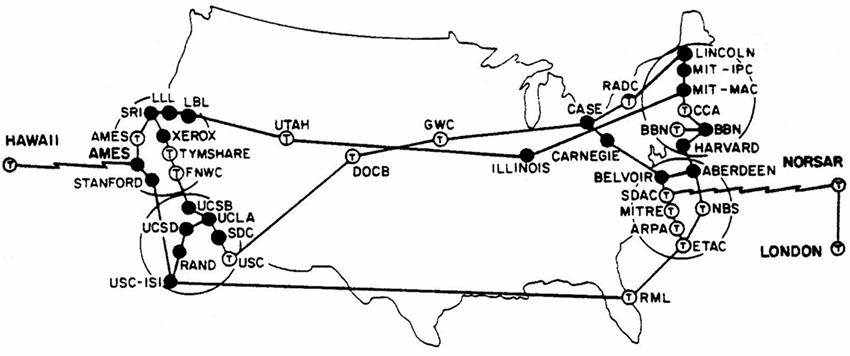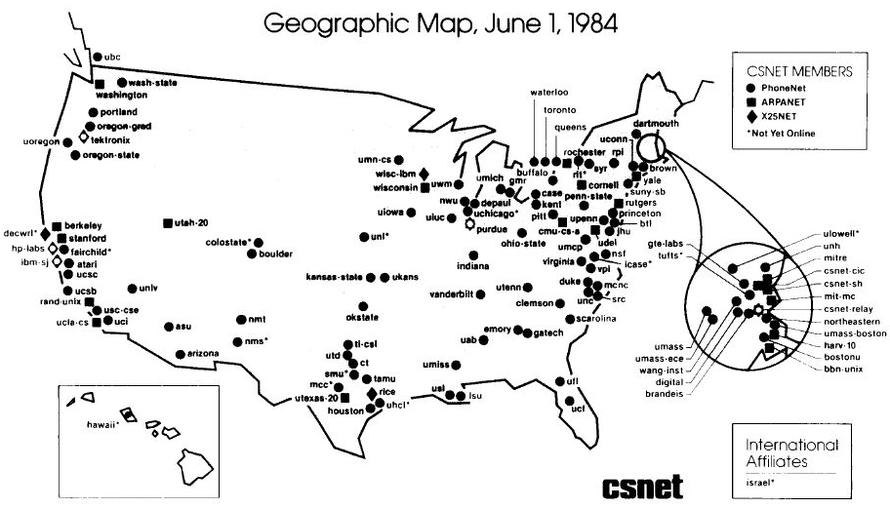Before the modern internet, there was ARPANET.
As Visual Capitalist’s Frank Cardona explains, ARPANET was the first internet-like network, and it was developed to allow multiple computers to share data across vast geographical distances. Interestingly, the researchers that worked on ARPANET are credited with developing many of the communication protocols that the internet still uses today.
Today’s map comes from David Newbury, who shared a keepsake from his father’s time as a computer science business manager at Carnegie Mellon University in the 1970s. We added a legend to help explain the symbols on the map.
A BRIEF HISTORY OF ARPANET
ARPANET was funded in the late 1960s by a branch of the U.S. Military called The Advanced Research Projects Agency (ARPA), with the original purpose being to allow researchers at different universities to use their limited computing resources more efficiently.
Before ARPANET, if a researcher at Harvard wanted to access a database at Stanford, they had to travel there and use it in person. ARPANET was used to test out a new communication technology known as packet-switching, which broke up data into smaller “packets” and allowed various computers on the network to access the data.
With ARPANET researchers could:
- Login to another computer miles away
- Transfer and save files across the network
- Send emails from one person to several others
On the map below, you can see the network only had computers in the United States, but later that same year, a satellite link connected the ARPANET to the United Kingdom, creating the beginnings of a global network.
A NETWORK OF NETWORKS
In 1983, ARPANET adopted the TCP/IP protocol standards which paved the way for a “network of networks”, and the internet was born. Several years later, ARPANET would be decommissioned and the new internet would begin to flourish.
Below you can see what the early internet looked like in 1984:
A BIG JUMP
These maps take us back to a simpler time when social networks, mobile phones, and unlimited access to the world’s information did not yet exist. Even 12 years after the first message was transmitted on the ARPANET, there were still only 213 computers on the network.
Fast forward a few decades later and the change in scale is mind-boggling – the modern internet has 1.94 billion websites and 4.1 billion internet users globally, resembling a digital universe.
One can only imagine how quaint the ARPANET will look a few more decades from now.
via ZeroHedge News https://ift.tt/2tRne0J Tyler Durden


